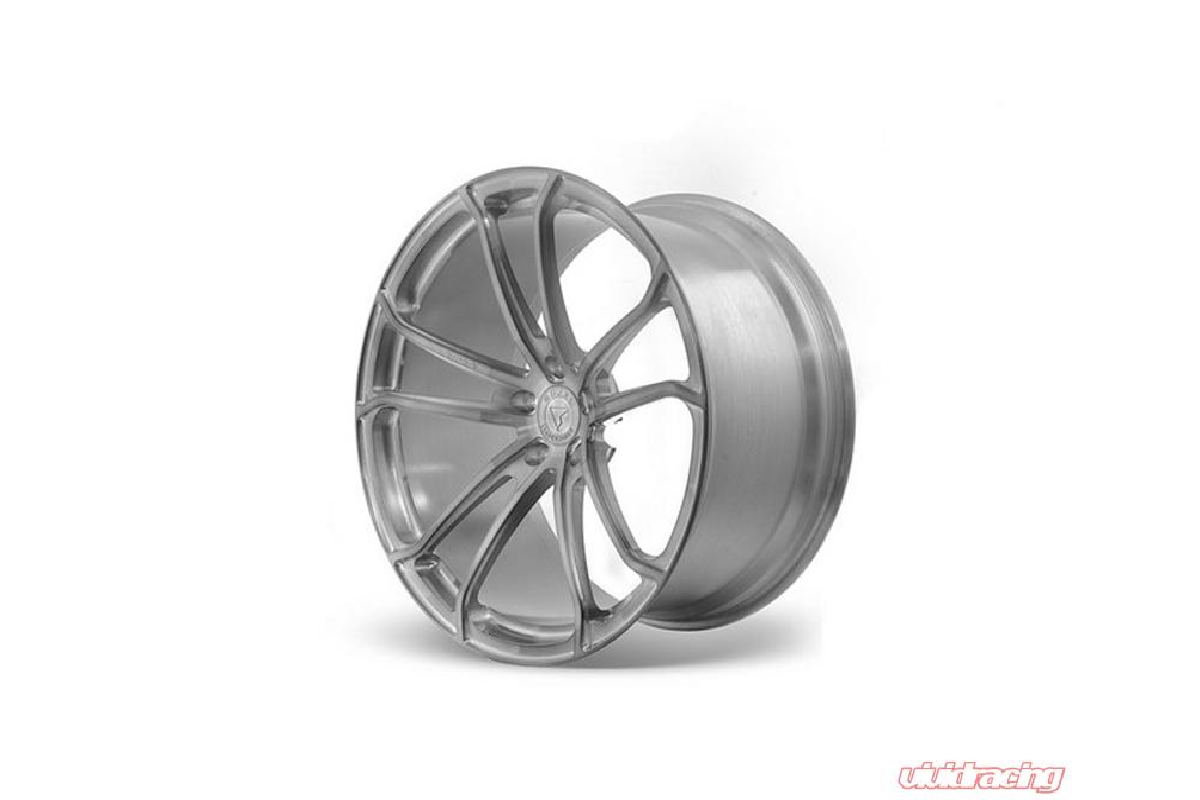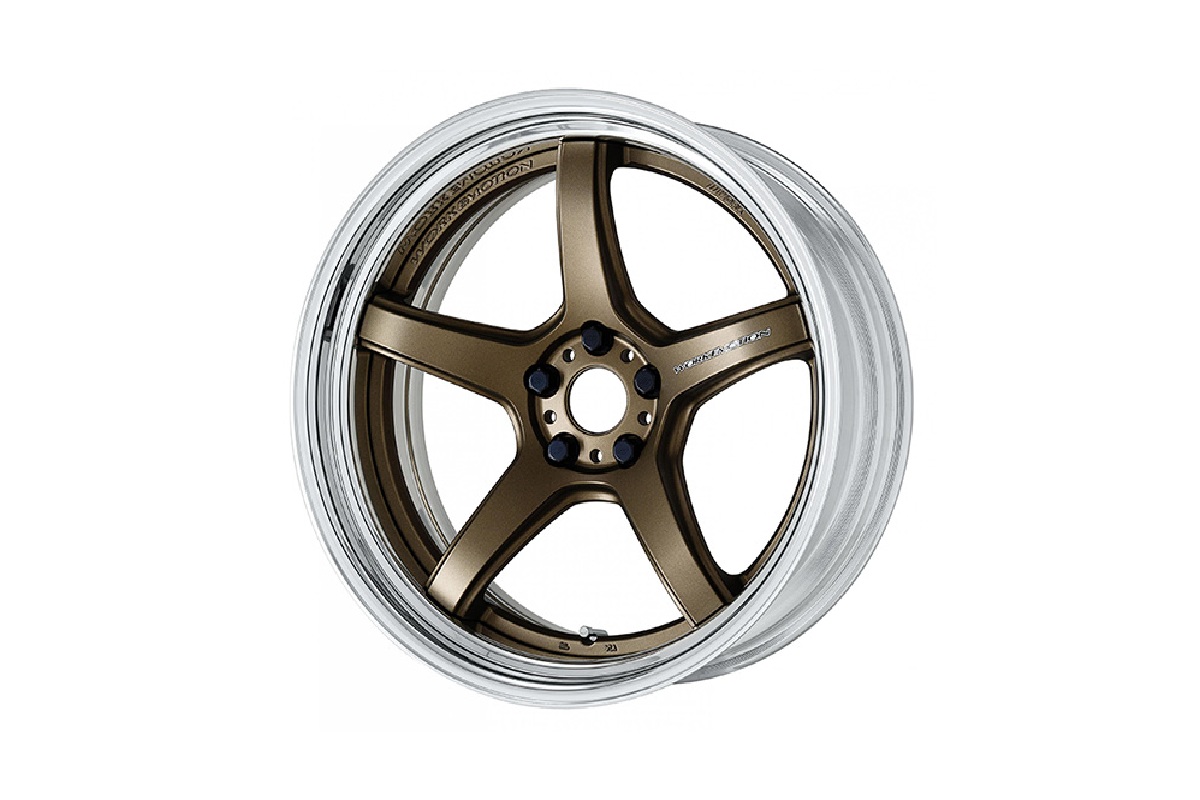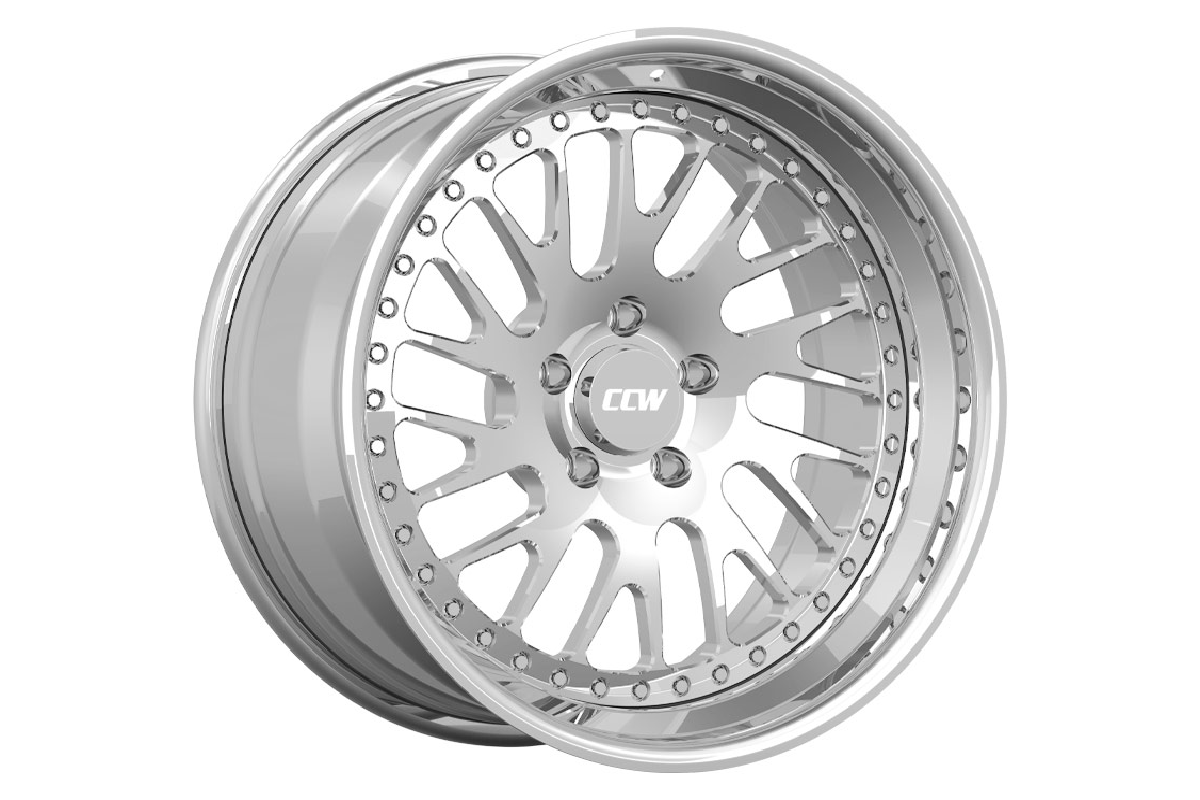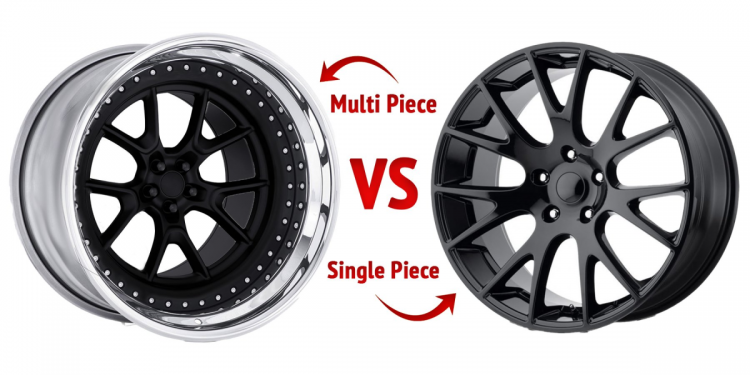When it comes to wheels, many car enthusiasts’ concern is whether they are durable and the right fit for their vehicles. It’s rare to find a car owner interested to know if the wheel is a one-piece or a three-piece wheel. In this article, I’m going to explore all three, as each wheel has its advantages and disadvantages but also unique features that you should start to think about as you are customizing your car with new wheels.
Click Here to Buy Wheels from Our Shop
One-Piece Wheels
These are the most common types of wheels that I am sure you have seen frequently on the road. Simply put one-piece wheels are made by casting molten aluminum into a mold, a single piece of metal. The process consists of the material being either flow formed, pressure cast or forged. Cast and forged refer to how the wheel was manufactured, which in turn will determine the wheel’s performance characteristics and its price.
Cast wheels are manufactured by adding molten magnesium or aluminum alloy into a mold where it cools and takes shape. Forged wheels are made from a solid block of alloy which is heated and subjected to immense pressure to create the wheel’s form and shape before it is finished on milling and CNC machines. Because of how they are manufactured, forged wheels have more strength compared to wheels that are manufactured by casting.

One-piece wheels are:
- perfect for those with stock or mildly modified vehicles that aren’t interested in maximizing their wheel/tire package
- have lower replacement cost
- have a set size and backspace.
Their main advantages include their simplicity, low cost in production, lack of necessity of maintenance, in most cases they weigh less than a multi-piece wheel, they are usually of very high quality, and with increased durability. A one-piece wheel is less prone to damage but if it happens it is damaged, it can be repaired quickly.
Since the one-piece wheels are solidified in the casting or forging process, their biggest disadvantage tends to be their customization. Your options for backspacing, offset, and width, become somewhat limited.
Two-Piece Wheels
Two-piece wheels consist of two separate components that come together to make a single wheel. Two-piece wheels have a cast or forged center (center piece and spokes) that is attached to the outer barrel (the rim), either by welding or via bolts. When it comes to customization, two-piece wheels offer more options and a wide variety of offset and width options.
Two-piece wheels are:
- custom finished in almost any color combo desired
- perfect for those with extensive suspension and/or body modifications or those that want the largest and/or widest wheel and tire package
- custom made to order to the exact specifications needed for modified vehicles
- made from either a cast aluminum center welded to a forged aluminum barrel, or a forged aluminum center welded to a forged aluminum barrel
- flexible when it comes to custom sizes, widths, backspacing, and finish
Some of the parts that make up a two-piece wheel are:
Barrel: this is a cylindrical outer edge of a wheel holding the tire on the wheel. It is usually U-shaped and it is deeper in the center than around the edges since this provides support to the bead of the tire. The rim is normally made from the same metal or alloy as the rest of the wheel
Spokes: these are the structural member that connects the rim and hub. They are the pieces that are between the edge of the rim and the plate in the center of the wheel.
Center Bore: this is an empty area on the backside of the wheel. Its function is to support the weight of the vehicle and that’s why it is at the center and on the wheel’s backside.

Some of the advantages of a two-piece wheel include the fact that if there is any damage on the barrel, it may be possible to replace it without replacing the whole wheel, They can also be customized; they are constructed to a specified set of dimensions (varied offset/backspace). Two-piece wheels can also be easily disassembled, painting individual parts is easier than with a one-piece wheel.
Major drawbacks for two-piece wheels include their higher price because of their customization and easy reparability, and they are also a little bit heavier compared to a one-piece wheel.
Visit Our Shop to Buy Forged Wheels
Three-Piece Wheels

With three-piece wheels manufacturers can create a far greater range of widths and offsets for a single wheel design. Three-piece wheels follow the same construction principles but they have a center and two separate portions of the barrel attached via bolts.
The three-piece wheels are;
- made up of three parts, a center, an inner barrel and an outer barrel (lip) which provides protection and stability
- usually custom made and hence good for fitment
- strongest, lightest, stiffest, most durable with low rotational inertia if they are made by forging
Some of the advantages of a three-piece wheel include; damage control, the forged materials are resilient against bums but even if there’s damage repairing is cheaper since you can just replace the damaged part and not the whole wheel. Another advantage is that they offer customization, offsets can be tailored to your car by adjusting the size of inner and outer barrels and this provides more fitment options.
However it should be mentioned that the three-piece wheels are heavier compared to one-piece wheels and they are not very strong compared to the one-piece and two-piece wheels. Three-piece wheels are very high maintenance in terms of cleaning them and most of them vibrate in the rain when the water gets trapped in the place where the two-piece barrels meet.
Three-piece wheels are also very expensive, it is very hard to find a three-piece wheel that doesn’t cost more than twice or thrice the price of the one-piece wheel. Many consider them to be aesthetically pleasing but it is reasons like these that make people stick with one-piece wheels.




